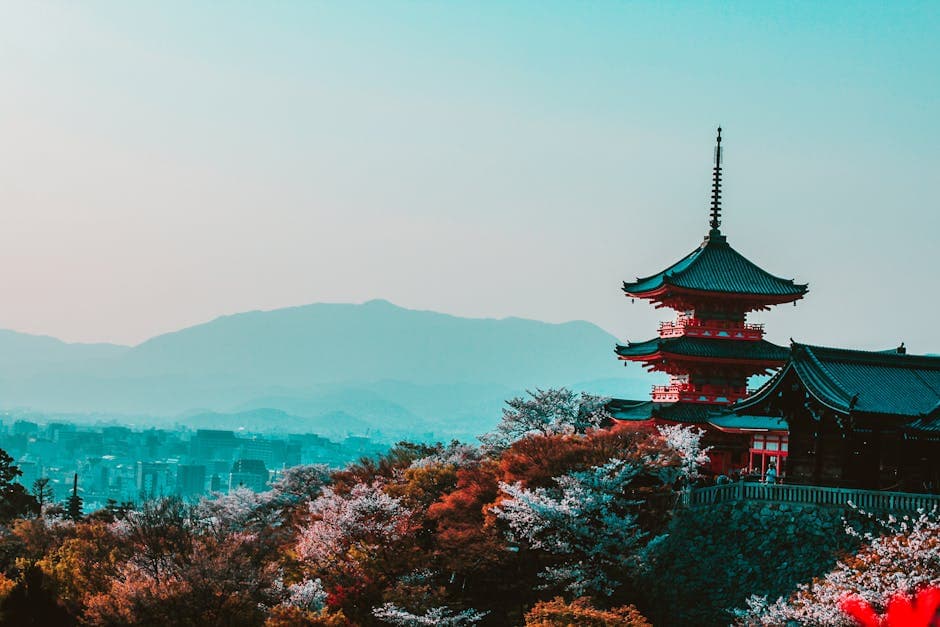Lucas Botzen
Founder & Managing Director
Last updated:
October 7, 2025
What is an Employer of Record in Japan?
View our Employer of Record servicesAn Employer of Record (Eor) in Japan helps you hire employees there without setting up a local entity. This means you can enter the Japanese market and hire talent quickly. The EOR takes on the legal responsibilities of an employer. They handle payroll, taxes, benefits, and compliance with Japan's labor laws. This lets you focus on managing your team and growing your business. For a complete solution, you can explore services like Rivermate (https://rivermate.com/employer-of-record).
How an Employer of Record (EOR) Works in Japan
Using an EOR in Japan simplifies hiring. Here is how it works:
- You Find the Candidate. You recruit the talent you want to hire in Japan.
- The EOR Hires Your Candidate. The EOR legally hires the employee on your behalf through a local, compliant employment contract.
- Onboarding Starts. The EOR manages the entire onboarding process. This includes handling all necessary paperwork for the new hire.
- Day-to-Day Management is Yours. The employee works for your company. You manage their daily tasks and responsibilities.
- EOR Handles HR and Payroll. The EOR takes care of all HR administrative tasks. They process payroll, taxes, and social security contributions according to Japanese regulations. You receive a single monthly invoice.
Why use an Employer of Record in Japan
Using an EOR in Japan makes global expansion simpler and faster. It removes the major hurdle of establishing a legal entity in the country, which can be a long and expensive process. An EOR gives you a quick and compliant way to build a team in Japan.
Here are some key benefits:
- Enter the Market Faster. Hire employees and start operations in days, not months.
- Ensure Full Compliance. EORs are experts in Japanese labor law. They make sure your hiring practices meet all legal requirements for contracts, benefits, and protections. This includes navigating health insurance, pension, and unemployment insurance systems, which you can learn more about from the Ministry of Health, Labour and Welfare (https://www.mhlw.go.jp/english/).
- Reduce Costs. Avoid the high costs associated with setting up and maintaining a legal entity in Japan.
- Simplify HR and Admin. The EOR handles all payroll, tax withholding, and benefits administration. This frees up your time to focus on your business goals.
- Offer Competitive Benefits. Attract and retain top talent by offering them competitive and locally compliant benefits packages.
Responsibilities of an Employer of Record
As an Employer of Record in Japan, Rivermate is responsible for:
- Creating and managing the employment contracts
- Running the monthly payroll
- Providing local and global benefits
- Ensuring 100% local compliance
- Providing local HR support
Responsibilities of the company that hires the employee
As the company that hires the employee through the Employer of Record, you are responsible for:
- Day-to-day management of the employee
- Work assignments
- Performance management
- Training and development
Costs of using an Employer of Record in Japan
Rivermate's transparent pricing model eliminates complexity with a single, competitive monthly fee per employee. Unlike traditional PEO providers, our pricing in Japan includes comprehensive HR support, benefits administration, compliance management, and access to our proprietary dashboard for real-time workforce analytics. No hidden costs, no setup fees—just straightforward pricing that scales with your business needs while ensuring full legal compliance in Japan.
Employ top talent in Japan through our Employer of Record service
Book a call with our EOR experts to learn more about how we can help you in Japan







Book a call with our EOR experts to learn more about how we can help you in Japan.
Trusted by more than 1000 companies around the globe
Hiring in Japan
Hiring in Japan can seem complex, but we'll break it down for you. The workforce is highly educated and the government encourages foreign business. This guide will walk you through the key aspects of hiring in Japan, from contracts to contractors.
Employment contracts & must-have clauses
While you can have a verbal agreement, a written employment contract is the standard in Japan. It brings clarity and helps you and your employee understand the terms of employment. You must provide certain key employment terms in writing.
Here are the essential clauses to include:
- Contract term: State whether the contract is for a fixed period or is indefinite.
- Workplace and duties: Clearly describe the job responsibilities and the location of the work.
- Working hours: Detail the start and end times, breaks, and any overtime expectations.
- Wages: Explain how you calculate and pay wages, including pay dates.
- Termination: Outline the reasons and procedures for ending the employment.
- Renewals: For fixed-term contracts, specify the criteria for renewal.
Probation periods
In Japan, you can include a probation period in your employment contracts. This trial period allows you to assess a new employee's skills and fit.
- Typical length: Probation periods usually last from three to six months.
- Termination: You have more discretion to terminate an employment contract during the probation period.
- Notice: If the employee has worked for more than 14 days, you must provide 30 days' notice for termination.
Working hours & overtime
The standard workweek in Japan is 40 hours, with a maximum of eight hours per day.
- Overtime: Any work beyond these hours is overtime.
- Overtime pay: You must pay a premium for overtime hours.
- Night work: Work between 10 p.m. and 5 a.m. also requires additional pay.
Here’s a simple breakdown of overtime pay rates:
| Overtime Hours | Pay Rate |
|---|---|
| Up to 60 hours per month | At least 125% of the normal hourly wage |
| Over 60 hours per month | At least 150% of the normal hourly wage |
| Work on statutory holidays | At least 135% of the normal hourly wage |
Public & regional holidays
Japan has 16 national public holidays. If a national holiday falls on a Sunday, the following Monday becomes a public holiday.
Here is a list of Japan's public holidays for 2025:
| Date | Holiday |
|---|---|
| January 1 | New Year's Day |
| January 13 | Coming of Age Day |
| February 11 | National Foundation Day |
| February 23 | The Emperor's Birthday |
| March 20 | Vernal Equinox Day |
| April 29 | Showa Day |
| May 3 | Constitution Memorial Day |
| May 4 | Greenery Day |
| May 5 | Children's Day |
| July 21 | Marine Day |
| August 11 | Mountain Day |
| September 15 | Respect for the Aged Day |
| September 23 | Autumnal Equinox Day |
| October 13 | Sports Day |
| November 3 | Culture Day |
| November 23 | Labor Thanksgiving Day |
Hiring contractors in Japan
You can also hire independent contractors in Japan. This can be a flexible way to access specialized skills. However, you need to be careful about worker classification.
An independent contractor:
- Works without your direct supervision.
- Can accept or reject projects.
- Determines their own work methods and hours.
- Is responsible for their own business income reporting.
Misclassifying an employee as a contractor can lead to serious consequences, including fines and back payment of taxes and social security contributions.
An Employer of Record (EOR) can help you mitigate this risk. An EOR acts as the legal employer for your workers in Japan. This means they handle all the legal and administrative tasks, including:
- Drafting compliant employment contracts.
- Managing payroll and taxes.
- Ensuring compliance with local labor laws.
Using an EOR allows you to hire in Japan without setting up a local entity, saving you time and reducing your legal risks.

Compensation and Payroll in Japan
In Japan, handling compensation and payroll means understanding a structured system with specific rules. You'll find that things like pay schedules, taxes, and social contributions are quite defined. This system ensures both you and your employees know what to expect. It’s a key part of running a compliant and happy team in the country.
Payroll cycles & wage structure
In Japan, you typically pay your employees once a month. The most common payday is the 25th of the month. If that day is a holiday, you pay them on the business day before. While monthly pay is standard, you can also choose to pay weekly or bi-weekly if that works better for your company.
Your employees' paychecks will have a clear breakdown of their gross salary and any deductions. Many companies in Japan also offer a commuting allowance to cover transportation costs. It's a common practice, though not required by law. Bonuses are also a big part of the pay structure, often paid twice a year in the summer and winter.
Overtime & minimums
Standard work hours in Japan are eight hours a day and 40 hours a week. If your employees work more than that, you need to pay them overtime. The exact overtime rate will be in their employment contract.
The minimum wage in Japan varies by prefecture, so it's important to know the specific rate for your location. For example, Tokyo has a higher minimum wage than other areas. These minimums are set by the government and are updated periodically.
Employer taxes and contributions
As an employer in Japan, you are responsible for several payroll contributions. These are for social and labor insurance systems that benefit your employees.
| Contribution | What it Covers |
|---|---|
| Health Insurance | Medical care for employees. |
| Pension Insurance | Retirement benefits. |
| Unemployment Insurance | Support for employees if they lose their job. |
| Workers' Accident Insurance | Compensation for work-related injuries or illnesses. |
| Child Benefits Contribution | Funds for family support programs. |
Employee taxes and deductions
Your employees will also see several deductions on their pay stubs. You are required to withhold these from their salaries and pay them to the government.
| Deduction | What it Is |
|---|---|
| Health Insurance | The employee's share of their medical coverage. |
| Pension Insurance | The employee's contribution to their retirement fund. |
| Unemployment Insurance | The employee's portion of unemployment coverage. |
| Withholding Income Tax | National income tax deducted monthly. |
| Inhabitant Tax | Local tax based on the previous year's income. |
How an Employer of Record, like Rivermate can help with payroll taxes and compliance in Japan
An Employer of Record (EOR) manages monthly payroll calculations, employer contributions, and tax filings in-country on your behalf. Rivermate handles registrations, payslips, statutory reporting, and remittances to authorities so you stay compliant with local rules and deadlines—without setting up a local entity. Our specialists monitor regulatory changes and ensure correct rates, thresholds, and caps are applied to every payroll cycle.
Loading calculator...
Benefits and Leave in Japan
In Japan, you'll find a solid foundation of leave and benefits for employees. The system ensures people get time off to rest and observe cultural traditions. It also provides a safety net through mandatory social insurance. This approach helps create a stable and healthy workforce.
Statutory leave
Japanese law provides several types of leave to employees.
- Annual Leave: You get paid time off based on how long you've worked. It starts at 10 days after six months of continuous employment. This increases each year, reaching a maximum of 20 days after 6.5 years of service. Employers must make sure you take at least five of your entitled paid leave days each year.
- Maternity and Paternity Leave: New mothers receive 14 weeks of paid maternity leave. Fathers can take up to four weeks of paid leave within eight weeks of their child's birth.
- Childcare Leave: After maternity or paternity leave, either parent can take childcare leave until the child turns one. This can be extended if certain conditions are met.
- Caregiver Leave: You can take time off to care for a family member with a long-term health condition.
- Sick Leave: Japan does not have a national statutory sick leave policy. If you are sick, you are generally expected to use your annual paid leave. However, many companies offer some sick leave as an additional benefit.
Public holidays & regional holidays
Japan has 16 national public holidays. If a holiday falls on a Sunday, the following Monday becomes a public holiday.
| Date | Holiday |
|---|---|
| January 1 | New Year's Day |
| Second Monday of January | Coming of Age Day |
| February 11 | National Foundation Day |
| February 23 | The Emperor's Birthday |
| March 20 | Vernal Equinox Day |
| April 29 | Shōwa Day |
| May 3 | Constitution Memorial Day |
| May 4 | Greenery Day |
| May 5 | Children's Day |
| Third Monday of July | Marine Day |
| August 11 | Mountain Day |
| Third Monday of September | Respect for the Aged Day |
| September 23 | Autumnal Equinox Day |
| Second Monday of October | Sports Day |
| November 3 | Culture Day |
| November 23 | Labor Thanksgiving Day |
Japan also has a few key holiday periods:
- Golden Week: This is a collection of four national holidays in late April and early May.
- Silver Week: A series of holidays in September.
- Obon: While not an official public holiday, many companies close for this mid-August festival that honors ancestors.
Typical supplemental benefits
Many companies in Japan offer benefits beyond the legal requirements to attract and retain talent.
| Statutory Benefits | Non-Statutory (Supplemental) Benefits |
|---|---|
| Social Insurance (Health, Pension, Unemployment, Accident) | Commuting allowance |
| Annual paid leave | Housing allowance or subsidized housing |
| Maternity, paternity, and childcare leave | Additional paid leave (e.g., sick leave, summer holidays) |
| Caregiver leave | Private health and life insurance |
| Annual health check-ups | |
| Meal allowances or subsidized cafeterias | |
| Retirement bonuses |
How an EOR can help with setting up benefits
Setting up a competitive and compliant benefits package in a new country can be complex. An Employer of Record (EOR) simplifies this process for you.
An EOR already has a legal entity in Japan. This means they can hire employees on your behalf and handle all local HR tasks.
Here's how an EOR helps with benefits:
- Compliance: We ensure your benefits package meets all of Japan's legal requirements.
- Local Expertise: We understand the local market and what benefits candidates expect. This helps you offer a competitive package that attracts top talent.
- Administration: We manage the entire benefits administration process. This includes enrolling employees in social insurance and managing any supplemental benefits you choose to offer.
- Simplicity: You get one simple invoice for all employment costs, including salaries and benefits. We handle the rest.
Using an EOR saves you time and reduces risk. You can focus on your business goals while we take care of the complexities of local employment.
How an Employer of Record, like Rivermate can help with local benefits in Japan
Rivermate provides compliant, locally competitive benefits—such as health insurance, pension, and statutory coverages—integrated into one EOR platform. We administer enrollments, manage renewals, and ensure contributions and withholdings meet country requirements so your team receives the right benefits without added overhead.
Termination and Offboarding in Japan
Let's talk about ending employment in Japan. It’s a process that requires care and understanding of local laws and customs. Japanese labor laws protect employees, so you can't just dismiss someone without a valid reason. The process is structured, and you need to follow specific steps to ensure everything is handled correctly.
Notice periods
When you decide to terminate an employee, you must provide at least 30 days' notice. This is a legal requirement under Japan's Labor Standards Act.
Alternatively, you can choose to pay the employee their average wage for 30 days instead of having them work during that period. This is often called payment in lieu of notice. If you give, for example, 10 days' notice, you must pay for the remaining 20 days.
There are a few exceptions to the 30-day notice rule. One is for cases of serious employee misconduct. Another is if a natural disaster or unavoidable event makes it impossible to continue the business.
Severance pay
Japanese law does not require you to pay severance to a terminated employee. However, it is a common practice. Many companies choose to offer a severance package.
Why? Offering severance can make the departure smoother. It is often used to encourage an employee to resign voluntarily, which can be a more amicable solution than dismissal. The amount of severance pay can vary, but it's often equivalent to several months' salary.
How Rivermate handles compliant exits
At Rivermate, we make sure that every termination is handled in full compliance with Japanese law. We guide you through the entire process, step by step.
Here’s how we help:
- Documentation: We work with you to ensure all reasons for termination are well-documented. This is crucial if the dismissal is for cause, such as poor performance.
- Notice and Pay: We manage the notice period requirements, whether it's providing the full 30 days' notice or arranging for payment in lieu of notice.
- Smooth Transition: We handle the final payroll and all necessary offboarding paperwork.
- Clear Communication: We help you communicate the decision respectfully and clearly, which is important in Japanese business culture.
Our goal is to make the process as clear and straightforward as possible. We help you navigate the complexities of Japanese employment law to ensure a compliant and fair exit for your employees.
Visa and work permits in Japan
Getting a visa to work in Japan involves a few key steps. The process is clear, but it requires careful preparation. Your employer in Japan will start by getting a Certificate of Eligibility (COE) for you. This document is essential. It shows that you meet the requirements to enter and work in the country. Once the COE is issued, you can apply for your work visa at the Japanese embassy or consulate in your country. Japan offers nearly 30 types of work permits and long-term visas, each tied to specific job categories.
Employment visas & sponsorship realities
An Employer of Record (EOR) can be your legal employer in Japan, handling payroll, taxes, and HR. This is a practical solution if your company doesn’t have a legal entity in Japan. The EOR will sponsor your work visa, which means they take care of the application for your Certificate of Eligibility.
What an EOR can typically sponsor:
- General Work Visas: These are for professionals in fields like engineering, humanities, and international services. This is one of the most common routes.
- Skilled Labor Visas: For individuals with specific skills in certain industries.
- Intra-company Transferee Visas: If you are transferring from a foreign office to a Japanese branch of the same company, an EOR can facilitate this.
What an EOR may not sponsor:
- Highly Skilled Professional Visa: This visa uses a points-based system and is for individuals with advanced qualifications. While an EOR can assist with the application, the eligibility is highly dependent on your personal qualifications, such as your academic background, work experience, and salary.
- Start-up Visa: This visa is for entrepreneurs who want to start a business in Japan and is generally outside the scope of an EOR's services.
The reality is that an EOR simplifies the process for many common work visa categories. They have the local expertise to navigate the paperwork and legal requirements, making your move to Japan smoother.
Business travel compliance
For short-term business trips, you may not need a visa. Japan has agreements with over 60 countries that allow for visa-free entry for up to 90 days. This includes countries like the United States, the United Kingdom, Canada, and Australia.
What you can do on a short-term business visit:
- Attend meetings and conferences
- Conduct market research
- Engage in non-paid business activities
Important limitations:
- You cannot engage in any paid work for a Japanese company.
- You must have a return or onward ticket.
If your nationality requires a visa for short-term visits, you will need to apply at a Japanese embassy or consulate before you travel. The required documents typically include:
- A valid passport
- A completed visa application form
- A recent passport-sized photo
- An invitation letter from a Japanese company
- Your travel itinerary
How an Employer of Record, like Rivermate can help with work permits in Japan
Navigating work permits can be complex and time‑sensitive. Rivermate coordinates the entire process end‑to‑end: determining the right visa category, preparing employer and employee documentation, liaising with local authorities, and ensuring full compliance with country‑specific rules. Our in‑country experts accelerate timelines, minimize refusals, and keep you updated on each milestone so your hire can start on time—legally and confidently.
Frequently asked questions about EOR in Japan
About the author

Lucas Botzen
Lucas Botzen is the founder of Rivermate, a global HR platform specializing in international payroll, compliance, and benefits management for remote companies. He previously co-founded and successfully exited Boloo, scaling it to over €2 million in annual revenue. Lucas is passionate about technology, automation, and remote work, advocating for innovative digital solutions that streamline global employment.
